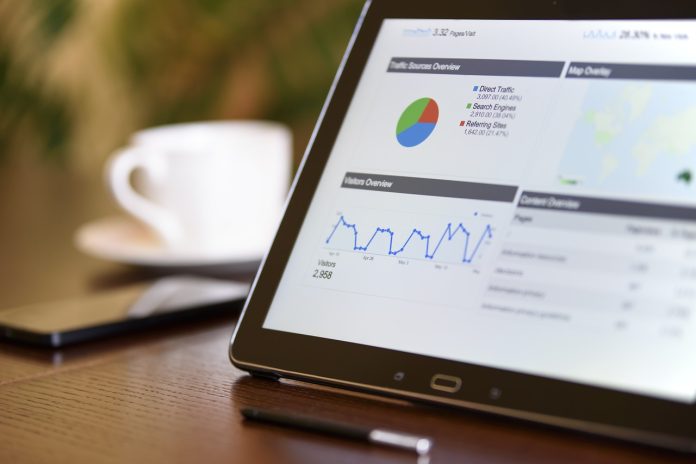By Trevor Testwuide, below, CEO, Measured
 In a world of looming recession and economic uncertainty, marketing teams are under more pressure than ever to demonstrate the return on advertising spend (ROAS). The advertising industry, long plagued by wavering trust between all parties involved, is experiencing a sweeping upheaval with dramatic repercussions. Data-privacy policy changes and restrictions on user tracking have wreaked havoc on performance reporting from digital ad platforms like Facebook, Pinterest, and Snapchat. Traditional last-touch attribution measurement used by most platforms is ineffective in a privacy first world and marketers are being challenged by tough questions from budget holders.
In a world of looming recession and economic uncertainty, marketing teams are under more pressure than ever to demonstrate the return on advertising spend (ROAS). The advertising industry, long plagued by wavering trust between all parties involved, is experiencing a sweeping upheaval with dramatic repercussions. Data-privacy policy changes and restrictions on user tracking have wreaked havoc on performance reporting from digital ad platforms like Facebook, Pinterest, and Snapchat. Traditional last-touch attribution measurement used by most platforms is ineffective in a privacy first world and marketers are being challenged by tough questions from budget holders.
In a recession, it’s common to slash marketing budgets across the board. But it’s also been proven that if marketing is fully ‘switched off’ for a few months, it takes considerably more time and resources to get it restarted and delivering the same sales impact as before. To ensure a business can survive – and even thrive – in tough economic conditions, it’s important to make sure the advertising budget is being spent as cost-effectively as possible. The challenge for most SMEs is that the picture of ROAS is murky at best.
What’s wrong with last-touch attribution?
As the name suggests, ‘last touch’ attribution only considers what a customer saw (or clicked on) last before converting, assigning 100% of the credit for that conversion to the final touchpoint. Most brands advertise on multiple channels and most consumers encounter ads in multiple places. When all the credit for a conversion is given to one touchpoint, we don’t account for the impact that other ads might have had. In the past, this resulted in ad platforms often over-reporting performance results because they were claiming credit for conversions that would have happened anyway.
Today, data privacy regulation and increasing restrictions on user-level tracking have impaired the ability for platforms to identify and track large segments of their users. As a result, we have found that many platforms are now under-reporting results to advertisers, in some cases by as much as 400+ percent!
While some multi-touch attribution companies have found workarounds for these data-privacy challenges, claiming they still have the ability to build user click-paths and connect them to conversions, eventually these loopholes will close. Governments around the world have demonstrated they are serious about enforcing consumer data-privacy protections.
The rise of incrementality in marketing measurement
Incrementality in marketing is the lift or increase in the desired outcomes (conversions) caused by a specific marketing activity. Measuring incrementality identifies the conversions that are above and beyond what would have happened anyway if the marketing activity being measured had not taken place.
Incrementality testing can reveal the true contribution that an ad channel, campaign, or tactic makes to desired outcomes, such as sales. Unlike last-touch, multi-touch, and other outdated attribution methods that are based on correlation, incrementality-based attribution identifies causation to answer the question, “which conversions were caused by that ad campaign?” The insights acquired through incrementality testing are based on data evidence from proven test and control experiments – similar to classic A/B testing most advertisers are familiar with, but often with many more layers of complexity. Using incrementality measurement, brands can identify areas to eliminate wasted budget and reveal opportunities to scale and grow.
So, why is incrementality better?
First and foremost, incrementality measurement can be run independent of questionable reporting from ad platforms. It was never a good idea to accept platforms grading their own homework in the first place, and for reasons outlined above, the results platforms are reporting are hardly reliable. Whether they are taking too much credit, or too little, the advertisers using those reports to make decisions about ad spend are likely wasting money or missing out on opportunities to increase ROI.
Another increasingly important benefit of incrementality measurement is that it continues to work, despite the challenges brought on by the death of cookies, data privacy, and ad blocking. Moving to a system that doesn’t rely on tracking user journeys may feel uncomfortable at first, because we’ve spent decades raving about digital marketing and all the insights we can gather by counting clicks and following individuals around the internet and across devices. But, the key objective is to find out what works and optimise your marketing to deliver maximum results. If you can do that while maintaining the level of privacy consumers demand, it’s a win-win.
Ultimately, incrementality-based measurement means you are measuring every marketing channel using the same currency. Rather than piecing together disparate last-touch performance reports from each channel and winding up with something that doesn’t reconcile with your actual sales data, incrementality provides a holistic view across the entire marketing mix and enables marketers to optimize ad spend for maximum efficiency.
Sounds expensive, can it work for SMEs?
Incrementality experiments can be very complex and can require the input of a trained data scientist to ensure they are designed and executed to be scientifically sound. When incrementality was very new, brands often had to run their incrementality tests by commissioning big and expensive research projects. However, through a great deal of automation and by drawing on insights collected from in-market experiments run during the past several years, the benefits of incrementality measurement are now accessible to brands of all sizes.
For example, the Measured platform is powered by a library of incrementality intelligence collected from more than 25,000 incrementality experiments run for more than 150 brands. With access to this collection of data, SMEs can now affordably test different media scenarios to see if doubling their Facebook budget is worth it, or how pausing Google search might impact sales. As the data is continuously updated, marketers can compare their spend allocation, costs, and results against similar brands to identify trends or explore new strategies.
Should I shift my media measurement approach when there’s a recession looming?
While it may feel risky to make any big changes right now, understanding the incrementality of your media can save small businesses vital advertising pounds that they are unwittingly letting go to waste. By saving money where it’s not working and improving the efficiency of your campaigns, you can take a scalpel instead of a hatchet to your budget. As with any other paradigm shift, those who catch on first are likely to benefit the most.


